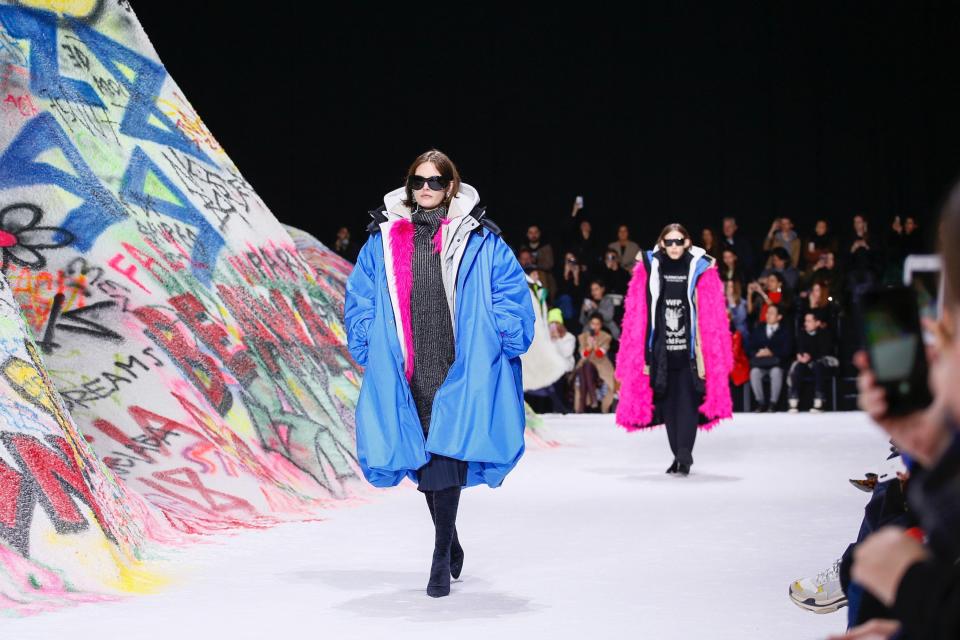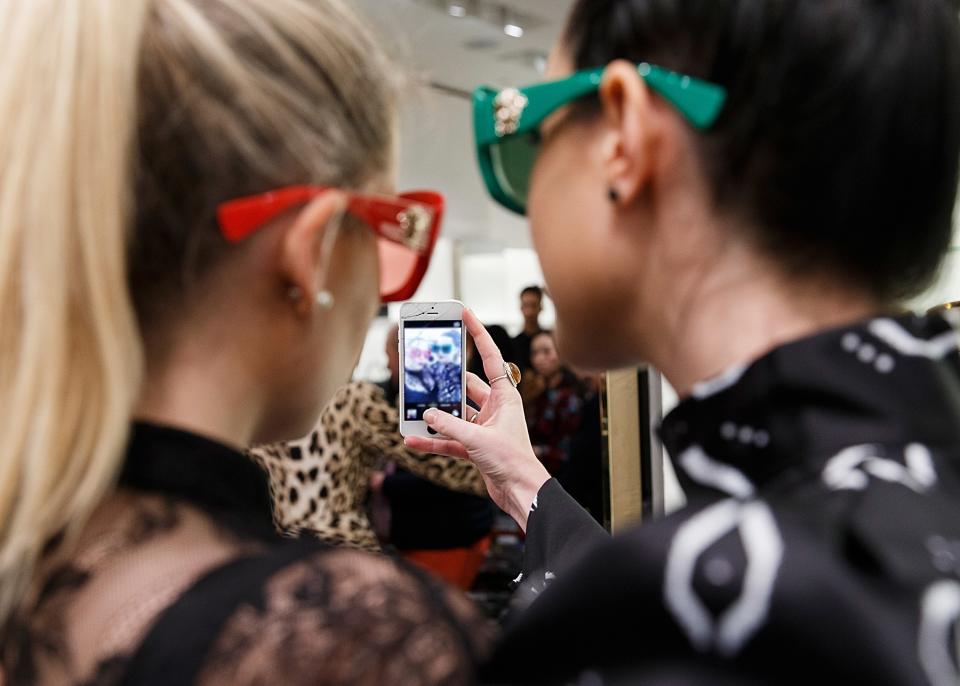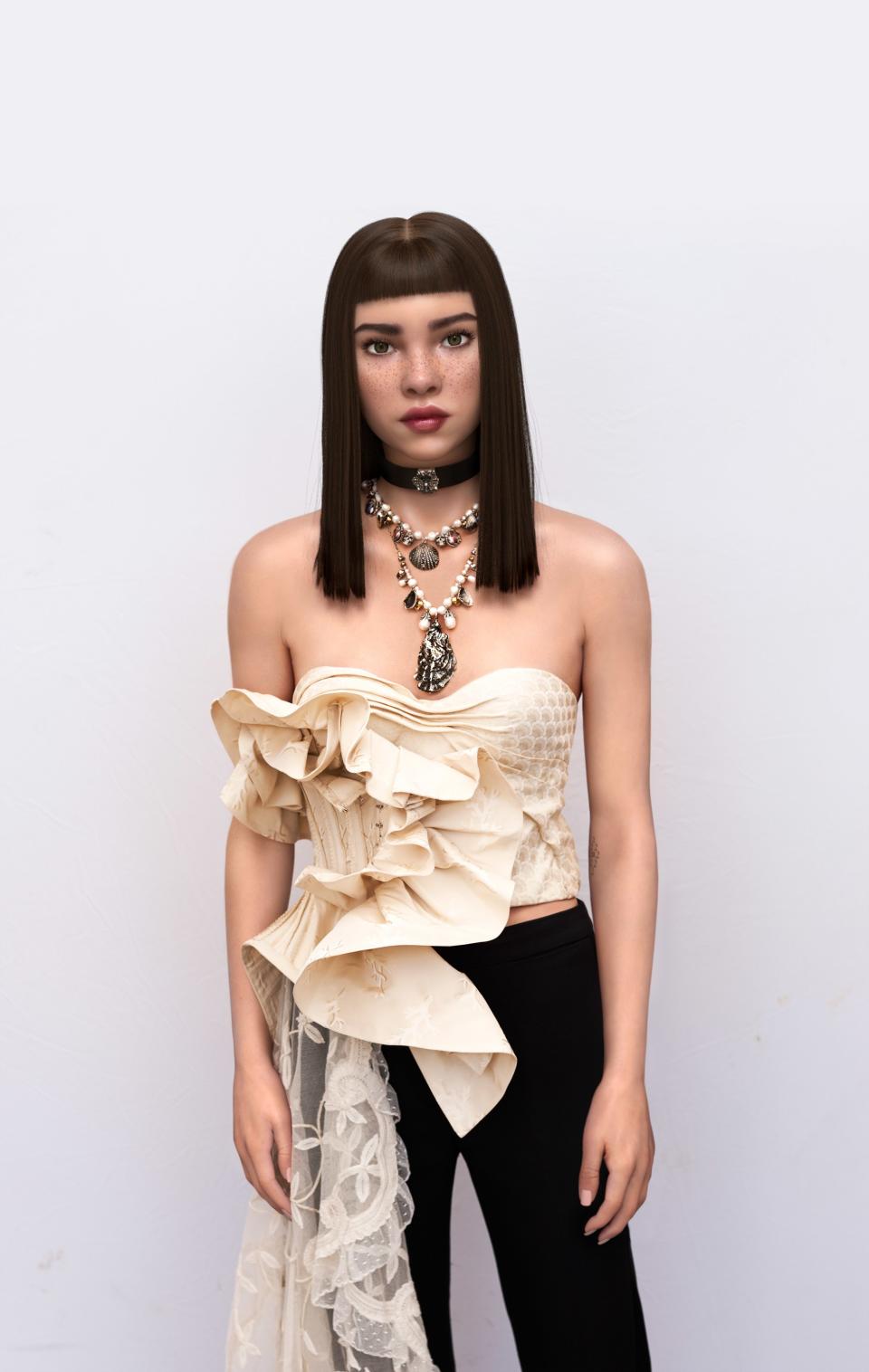Go Viral, Post #Spon, Get #Canceled: How Social Media Transformed Fashion in the 2010s
In 2010s currency, nothing is more valuable than clout. Getting it, using it, and keeping it has become a high-stakes game that has reshaped the way we conceptualize fashion. Success is no longer judged only by design merit, innovation, or sales figures but also on social media impressions, fan engagement, and the Lyst Index, which tracks the labels that appeal to millennials and Gen-Z consumers. The most popular brand of 2018, according to Google’s trending data, was Fashion Nova, which has never held a fashion show.
The combination of followers, buzz, revenue, and that elusive cool factor comes together to something we know as influence. Influence means you’re not only #winning by every metric but you also have the power to change the way those following you think and behave.
If influence seems intangible or speculative, like a bubble that could burst at any moment, consider this: More than one billion people use YouTube, WeChat, Facebook, Instagram, and Reddit on a monthly basis. Hundreds of millions log onto Snapchat, Twitter, and Weibo each month. And 13 million monthly users visit Depop; as a group they transmit 85 million monthly messages and follows. For reference: To become president of the United States, accounting for a 50 to 60% voter turnout, around 60 to 65 million people need to vote for you.
We’re living in the era of the first influencer president, who can mobilize a country with a single tweet. The dangerous takeaway is that to be influential you need only speak the loudest. But if the decade of influence has taught us netizens anything, it’s that just as quickly as you can go viral can you be #canceled. Just don’t cancel all the influencers, because after influencers come A.R. characters and A.I. bots, which have mastered groupthink in a way humans never could. That’s something to think about as we move into the second decade of the influence olympics.
Who Has the Influence?

493524988
Photo: Indigital.tvWhen the decade began, the new guard of influential people in fashion were bloggers. The best of the best, including The Sartorialist’s Scott Schuman and Jak & Jil’s Tommy Ton, sat in the front row of Dolce & Gabbana’s Spring 2010 show, signaling that a new generation of internet impresarios was here to stay. That same season Style Rookie’s teenage founder Tavi Gevinson made the rounds at the New York shows. Most famous bloggers had aliases to distinguish themselves from their brands; Style Rookie was the blog, but Gevinson was the writer. When Instagram launched in 2010, that all changed. The promise of a blue check mark of verification meant that you had to be you, not an alias or a character or a bot.
If your life is the material with which you express yourself online, few things remain as important as your outfits. In the early days of the decade, #OOTD became one of Instagram’s most popular hashtags, replacing the allure of a high-fashion editorial with a casually snapped “fit pic.” To be a social media sensation necessitated little more than an internet connection and a compelling image. Not even a caption. Not a hashtag. Just you. And so the influencer was born.
This democratization of fashion goes both ways: If people can become brands, brands can become people—or at least behave like them online. A new crop of direct-to-consumer brands emerged in the 2010s that used the friendly tones of influencers as a means to success. Outdoor Voices is the flagship example, founded in 2014 by Tyler Haney. A former high school athlete with sun blonde hair and the relatabililty of your best friend, Haney built her activewear brand on cheery colors, unfussy silhouettes, the promise that a chill morning run could make you feel a little more joy. She used her image to promote OV and created a catchy hashtag, #DoingThings, that is so wonderfully vague and unassumingly peppy that you can find yourself using it without even making the OV connection. We’re all #doingthings all the time, and nothing is more fun than sharing!
High fashion brands are in on influence, as well. Some creative directors have effectively become influencers themselves. Balmain’s Olivier Rousteing (5.4M followers), Burberry’s Riccardo Tisci (2.2M), and Marc Jacobs (1.3M) use their accounts to boost the popularity of their brands while simultaneously sharing tidbits of their private lives. (Few have mastered the fit pic as iconically as Jacobs—and he often does it wearing garments by other designers. A true fashion fan. Bravo!) Of course, influencers can become creative directors too. Virgil Abloh is the ultimate multi-hyphenate, an engineer-architect-DJ-designer-social-media-impresario whose ability to speak directly to his 4.2M followers—and mobilize them to buy—made him a draw for the artistic directorship of Louis Vuitton’s menswear. Abloh is not just a “friend of” all the other most influential people IRL, but he’s communing with them and his fans online.
Where the influence lives is ever-shifting. TikTok has birthed an e-girl community of video influencers that reject Insta-aesthetics with seafoam-colored hair and unconventional makeup. None is a more interesting case study of Gen Z power than Emma Chamberlain. The 18-year-old is YouTube’s superstar blogger, who is estimated to have made $2 million from her YouTube ad revenue alone in 2018. Three years ago, in one of the videos she made while in high school, she gave a tutorial on how to bootleg a Gucci t-shirt. In February, Chamberlain attended the Louis Vuitton Fall 2019 show in Paris and produced a series of funny videos in which she jokes with Karlie Kloss and decodes Nicolas Ghesquière’s designs for her followers.
The Economy of Influence

1132540208
Photo: Getty ImagesHaving the ability to influence is only as good as what you’re selling. Sponsored content—#spon for short—has become a marketing phenomenon on social media. Some influencers can make upwards of six figures on a single post. Others use the #ad hashtag even when they haven’t partnered with a brand as a means to lend themselves legitimacy. Still more have been sued for “failure to influence,” as Luka Sabbat was in 2018 when Snapchat alleged he didn’t deliver on two sponsored posts. (Sabbat turned the lawsuit into yet more social fodder, posting a selfie in front of a “failure to influence” billboard designed by his company Hot Mess.)
What we’re selling on social media has likewise come a long way. The highest echelons of fashion are now accessible through Instagram’s Check Out feature. Dior’s highly successful #DiorSaddle campaign, launched in 2018 with dozens of influencers posting about the bag, is reported to have generated a 1000 percent increase in searches on Lyst for the label. At the other end of the spectrum, Depop allows users to curate their own shops and build followings primarily based on the act—or art?—of shopping.
The ability to connect directly to the source has changed the way we think about brands themselves. They are not far-off corporations helmed with Wizard of Oz-like creatives. Direct-to-consumer, a phrase once equated with dusty catalog shopping, has become the buzzword of the decade at businesses like Everlane and Warby Parker, which invite consumers to talk back, say what we like and what we don’t, and share our lives with them, along with their hashtags. Brands are our “friends.”
Going Viral

What impact has Internet culture had on design? When Style.com launched 20 years ago, designers griped that the backs of garments weren’t pictured, making a beautiful open back or draped detail almost irrelevant. The rise of livestreaming and video content has more or less erased that issue, but social media presents a whole new set of rules by which to judge clothing. Not only must something be wearable; now it must be sharable.
The most popular items of the decade, then, are not exactly subtle. Logomania made a triumphant return in the 2010s, as did fashion with a tongue-in-cheek irreverence and irony. Balenciaga’s Demna Gvasalia understands this better than anyone, offering fashion that participates in the internet’s obsessions without edging into parody. Some of his most buzzed about pieces include Balenciaga’s Fall 2018 “layered” coats, neon pink “shants”—shoe-pants—from Spring 2017, and the Triple S sneaker, a truly ugly shoe than nonetheless proved irresistible. Items and ideas that can be meme’d, like Jacquemus’s tiny bags and Gucci’s doppelgänger heads, create viral moments for brands that can surpass any celebrity endorsement or editorial approval. Y/Project’s denim “janties” made ABC’s Nightly News.
It’s not just the items that are changing, but it’s how we see them that is changing, too. In 2010, Chanel brought an iceberg to the Grand Palais for its Fall 2010 runway show, which set off a domino effect of set design one-upsmanship. Destination shows, once the purview of only the most mega of brands, have become a new normal, taking us to Cuba, Kyoto, Malibu, Rio de Janeiro, and more far-flung locales. To be a destination, you don’t really even need to have a show. The pink wall outside Paul Smith’s Melrose Ave. store has become one of the most popular places on Instagram.
People can go viral too, as Kendall Jenner did when she walked her first runway show in 2014, opening the door to a new type of model Vogue dubbed “Insta-girls.” They replaced the anonymous waifs of the late aughts—and guaranteed that a spot on the runway could turn any fashion show into a fashion moment.
#Cancelled

cancelled
Photo: Getty ImagesIf the internet seems vast and endless, it’s actually quite small. A fledgling designer from Norway can call out Moschino for perceived copying. Shoppers can boycott brands that make cultural faux pas. And China can ban Gigi Hadid and cancel Dolce & Gabbana because of social media-based transgressions.
Many of these #cancellations have come at the hands of @Diet_Prada, whose founders Tony Liu and Lindsey Schuyler act as Robin Hoods, holding fashion accountable. @estee_laundry keeps watch over the beauty industry with the same rigor. Other smaller accounts like @insidethemood and @supreme_copies draw comparisons between archival fashion and new designs, citing inspirations that have been stated or otherwise. “Call out culture” as it’s often referred to, does have a plus side. Fashion once thrived on its exclusivity, barring entire populations from participation. Comments stating that brands should cast more models of color, extend their size ranges, and/or diversify their offerings have proven impact.
But the act of canceling someone, or trying to, can turn into an endless back-and-forth of drama. When does justifiable calling out become trolling? As fashion is democratized, who gets to make the rules? We might not have an answer soon. Juvenal asked “who watches the watchmen?” in 100 AD.
Will We Ever Be IRL Again?

Technology will only move forward. As we become more plugged-in, the future of fashion is bound to change. Perhaps sharability and wearability will become synonymous. There are whole businesses built on this concept creating virtual fashion. Business of Fashion recently detailed the trend for clothing that is more URL than IRL. Dapper Labs made a $9,500 virtual dress for Mary Ma, the wife of a blockchain entrepreneur. Carlings is a virtual streetwear brand that sells its “garments” for under 30 euros each. In the popular video game Fortnite, you can buy Adidas sneakers for your avatar. These virtual items bring up ideas of sustainability, purpose, and design, challenging the very notion of a garment as something to protect you from the elements. Now a garment is the thing between you and your followers.
Here’s a crazy idea: What if you aren’t real, in the traditional sense, either? CGI influencers like Lil’Miquela and Noonouri are the products of coders, but that doesn’t stop them from engaging with both fashion and their fans with the ease of a flesh-and-blood human influencer. Miquela, who has a CGI influencer brother, has even starred in a campaign for Calvin Klein. Fake people, though, are not exempt from real criticism. Some called out the Calvin Klein brand for queerbaiting by showing Miquela making out with Bella Hadid. The virtual influencer Shudu, whose appearance is reportedly inspired by the South Sudanese-Australian model Duckie Thot, came under criticism because she’s designed by a white male.
Virtual and augmented reality technology have the potential to change everything again. Will they? That’s a question for the 2020s to answer, but the notion of influence might change drastically by then. Just last week the firm InfluencerDB shared findings that engagement rates for influencers is on the decline. According to the study shared with Mobile Marketer, “Travel influencers, who typically have the highest engagement rates, have seen an average drop to 4.5 percent this year from 8 percent in 2018.” Sponsor post engagement in the first quarter of 2019 plummeted to 2.4 percent, from 4 percent in 2016. Non-sponsored posts dropped to 1.9 percent. The question isn’t will the robots replace us, but if we’re all influencers, who can be influenced at all?
Originally Appeared on Vogue

